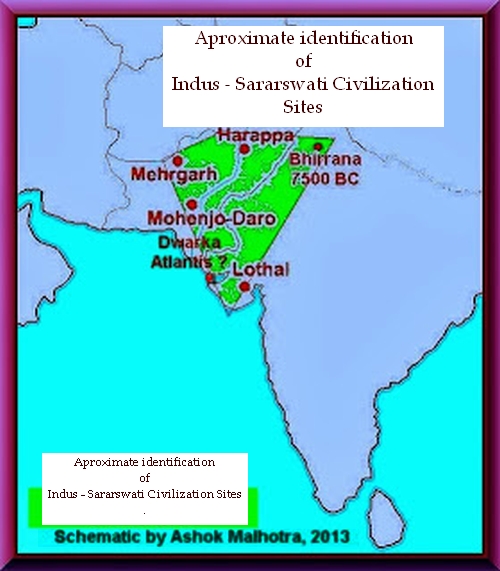The Builders of Stonehenge were probably of Armenian origin
 |
| Stonehenge |
Many have wondered who the builders of Stonehenge in England were.
Were they local persons or were they migrants from afar? Recent discoveries have shed more light on these people with
the recent discovery of Sun worship at Stonehenge. Three pieces of evidence support the conclusion
that these ancient persons were of Armenian origin:
- Although Menhirs exist all over Europe, three major prehistoric stone erecting civilizations have been discovered - in Carahunge, Armenia; Carnac, France and Wiltshire, England. Of these the oldest is the one in Armenia, followed by the civilization in Carnac France and the most recent of the three, around 3100 BC, the one in England. Therefore it does seem that the origins of this civilization lie in Armenia. However, the civilization appears to have evolved in its movements as indicated by an evolution of designs of their stone monuments
- All three civilizations worshiped the Sun that began with the worship of Sun God Ari in ancient Armenia and apparently this worship moved with them
- All three civilizations spoke the common language group, Indo- Aryan, and it seems that this language was propagated by these ancient Aryan people with their movement into new areas.
“Stone” in Armenian is “kar” and “henge” or “hunj” is - voice, sound, echo in Armenian. Located near the city of Sisian
in the province of Syunik, 230 standing stones called “Zorats Karer”
(also known as Carahunge) is one of the ancient archeological sites on the territory of Armenia.
It seems that the areas that the Indo-Aryans of Armenian origin moved into were previously inhabited by a more primitive people whom they were able to dominate with their more evolved language and culture. An evidence of existing primitive people in the Stonehenge region comes from a 33 metre-long burial mound containing a massive wooden building whose timber foundations were spotted in the soil, predating Stonehenge. The building is thought to have been a house of the dead where bizarre burial rituals were played out. The rituals included exposure of the dead bodies, and defleshing on a large forecourt, said Wolfgang Neuber, at the Ludwig Boltzmann Institute.
It seems that the areas that the Indo-Aryans of Armenian origin moved into were previously inhabited by a more primitive people whom they were able to dominate with their more evolved language and culture. An evidence of existing primitive people in the Stonehenge region comes from a 33 metre-long burial mound containing a massive wooden building whose timber foundations were spotted in the soil, predating Stonehenge. The building is thought to have been a house of the dead where bizarre burial rituals were played out. The rituals included exposure of the dead bodies, and defleshing on a large forecourt, said Wolfgang Neuber, at the Ludwig Boltzmann Institute.
It does appear likely that with the coming in of new people to Stonehenge area,
both populations would have intermarried and merged. The Bell- Beaker culture
that spread throughout Europe after 2500 BC is
something that came later, marking the next major evolution of European culture
into more civilized human groups. However, a major cultural evolution in Europe
did not begin until the coming of Greek and Roman civilizations that benefited
greatly from the best of preceding three great
river valley civilizations of Asia and Egypt.
It must be noted here that when Armenia is mentioned here it does not imply just the present day Armenia but a Indo-European speaking culture that extended westwards to include Southern Anatolia extending up to the Mediterranean region (Ancient Menhirs have been found here too), the land of the Hattis according to Sumerians, and perhaps also extending eastwards through northern parts of present day Iran to the foothills of North Western India at a point where the ancient Saraswati river descended from the Himalayas, thus explaining the widespread prevalence of Indo-European languages in the old world that stretches from Ireland in the west to Northern India in the East. It is also likely that this expansion took place as the population expanded in prehistoric times and there was a constant need to look for new agricultural areas. It is interesting to note that present day Armenia and Zorats Karer is nearly central to this vast geographical belt. During this expansion through the old world the ancient Indo-European people would have encountered the Sumerian and Akkadian speaking people in present day Iraq as also perhaps Austric speaking people in India with whom they appeared to have intermingled in relative peace and not any major wars.
It must be noted here that when Armenia is mentioned here it does not imply just the present day Armenia but a Indo-European speaking culture that extended westwards to include Southern Anatolia extending up to the Mediterranean region (Ancient Menhirs have been found here too), the land of the Hattis according to Sumerians, and perhaps also extending eastwards through northern parts of present day Iran to the foothills of North Western India at a point where the ancient Saraswati river descended from the Himalayas, thus explaining the widespread prevalence of Indo-European languages in the old world that stretches from Ireland in the west to Northern India in the East. It is also likely that this expansion took place as the population expanded in prehistoric times and there was a constant need to look for new agricultural areas. It is interesting to note that present day Armenia and Zorats Karer is nearly central to this vast geographical belt. During this expansion through the old world the ancient Indo-European people would have encountered the Sumerian and Akkadian speaking people in present day Iraq as also perhaps Austric speaking people in India with whom they appeared to have intermingled in relative peace and not any major wars.
For recent reports on Stonehenge see:http://www.theguardian.com/science/2014/sep/10/stonehenge-teeming-chapels-shrines-archaeology-research?CMP=twt_gu)
http://www.bbc.co.uk/news/uk-england-wiltshire-15917921
Image modified from: http://commons.wikimedia.org/wiki/File:Stonehenge_back_wide.jpg This file is licensed under the Creative Commons Attribution-Share Alike 2.0 Generic license.





Comments